A look at the "Earth in Perspective" with Ricky Arnold
Suzanne Webster ·IAN hosted this year’s MEES Colloquium, offering students and faculty an opportunity to network and sharpen our science application and communication skills. The Colloquium sessions were previously described in more detail in the form of a poem blog post, written by Bill Dennison. NASA astronaut and MEES alumnus, Richard Arnold, served as our special guest speaker following the poster session and dinner on October 30th at the Banneker-Douglas Museum in historic downtown Annapolis. Ricky also spoke when IAN last hosted the MEES Colloquium in 2009, and was invited back this year to describe his experience in space and offer MEES students and faculty an inspiring new perspective of our collective research subject, the “Blue Planet”.
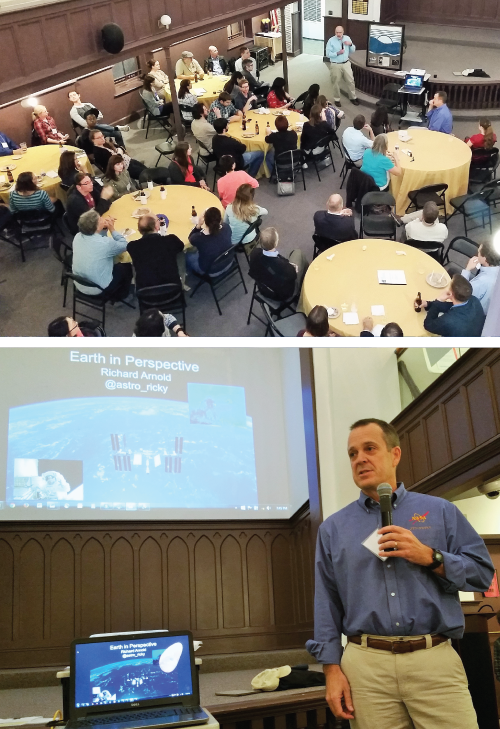
Ricky has a very interesting life story and I very much enjoyed speaking with him over dinner and asking him about his exciting path towards becoming an astronaut. Ricky was born and raised in Maryland, and graduated from Frostburg State University in 1985 with a B.S. in Accounting. He then decided to pursue his interest in science, working as an oceanographic technician for the U.S. Navy before accepting a science teaching job in Waldorf, Maryland. During this time, Ricky also conducted research in the Chesapeake Bay as a Masters student in the MEES program at the University of Maryland Horn Point Environmental Laboratory, constructing a paleohistory of aquatic grasses in the Severn River under the academic guidance of Dr. Bill Dennison. After graduating in 1992, Ricky worked in the Marine Sciences for another year on the Cape Cod National Seashore, including some time as an Assistant Scientist for the Sea Education Association aboard a research vessel headquartered in the oceanographic research community of Woods Hole, Massachusetts. He then turned to a career in science education, teaching middle and high school students in many countries around the world, including Morocco, Saudi Arabia, Indonesia, and Romania.
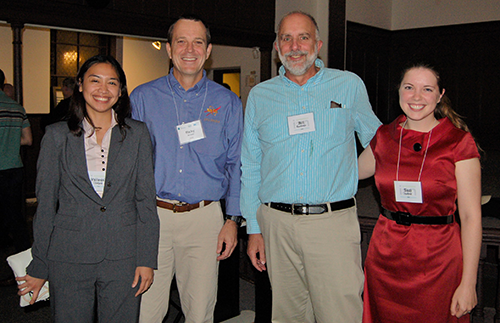
While Ricky was teaching abroad, NASA opened its astronaut program to educators, and Ricky jumped at the opportunity to apply for a spot on the Space Shuttle mission. Against his expectations, Ricky was selected from a pool of thousands of applicants and went on to complete Astronaut Candidate Training in 2006. Ricky also underwent aquanaut training in 2007 and participated in a joint NASA-NOAA mission in Aquarius, a unique underwater laboratory, investigating what it might be like to live in extreme environments, such as the moon and Mars. Two years later, Ricky served as a NASA Mission-Specialist Educator on the Space Shuttle Discovery mission STS-119, which launched on March 15, 2009 and delivered the final pair of power-generating solar array wings to the International Space Station.
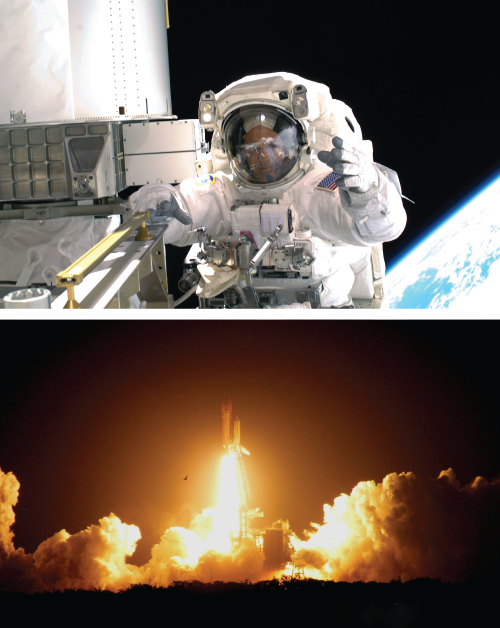
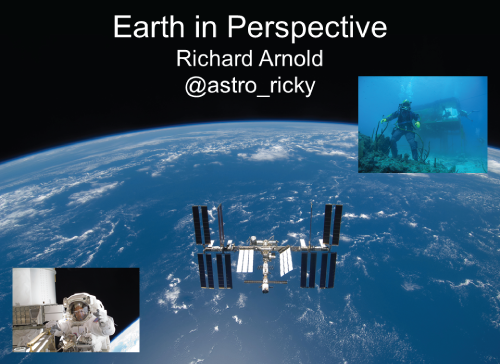
During his talk, Ricky described his experience of training and preparing for flight and how it felt when he was finally launched into space. He expressed gratitude for having had the opportunity to look down upon the Earth and appreciate all of its beauty from a unique perspective that few humans will ever experience. Ricky then took us on a tour of our solar system, describing the environmental conditions on all of the planets and major moons. Although some planets had certain similarities to Earth, such as NASA’s recent discovery of evidence of liquid water on the surface of Mars, space research thus far suggests that our planet is unique in its capacity to support life as we know it.
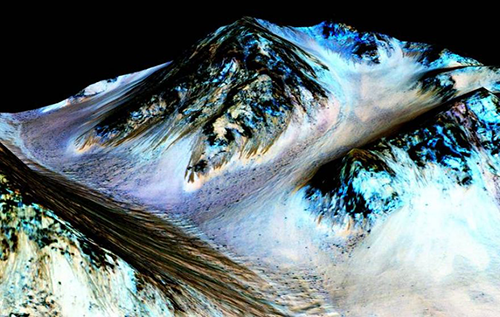
Next, Ricky drew our attention to our home planet and shared many breathtaking pictures and even a few video clips of familiar Earthly phenomenon from a different perspective. It was incredible to see the planet from the viewpoint of an astronaut aboard the International Space Station. Listening to Ricky’s story, it was fun to imagine what it might be like to sit up in the Space Station and take turns with other astronauts to press our face against the tiny window, in the hopes of catching an amazing fleeting glimpse of the world below. An astronaut aboard the International Space Station experiences 16 sunrises and 16 sunsets per day as the Station orbits the Earth. Ricky shared some of the other sights with us, too, such as lightning storms flickering beneath enormous clouds, aurora borealis lights shimmering on the surface of the Earth’s pole, atolls sinking beneath a rising ocean, and even a volcanic eruption that was reported by astronauts on the Space Station before USGS even knew it had occurred!

All of these photos were certainly impressive and inspiring, but there was an audible collective gasp throughout the room when Ricky displayed a picture of the Chesapeake Bay that was taken from the International Space Station. Many of the students in the room conduct their research on the Bay and many of the faculty members have devoted their lives to studying the Chesapeake. It was an incredible experience to be able to view that picture together on a giant screen and feel the excited energy and awe in the room as everyone enjoyed the new perspective and felt renewed appreciation of the beauty of our everyday environment.
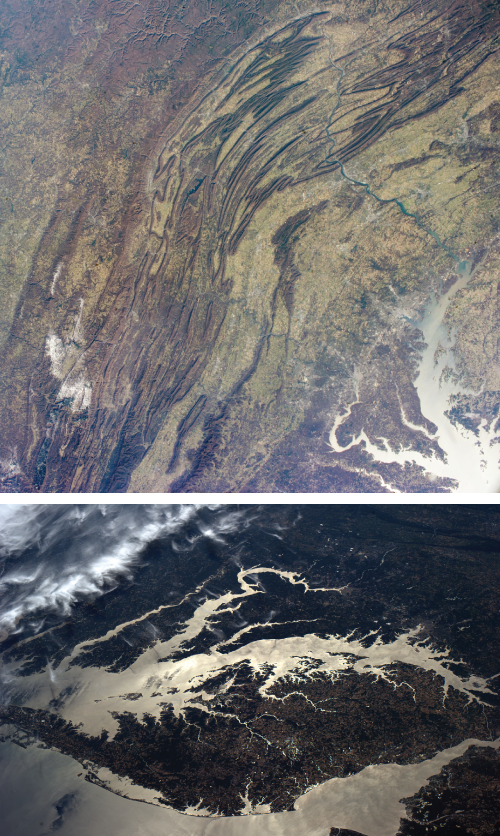
Ricky’s presentation clearly had a strong impact on the entire audience. After Ricky finished his talk, he received a very enthusiastic round of applause. Students and faculty were eager to probe him for additional information and more entertaining stories during the question and answer session that followed. At the end of the night, Bill Dennison recalled his experience watching the NASA TV website for the duration of Ricky’s space adventure, and remembered Ricky speak from the International Space Station and tell everyone back on planet Earth that he missed sleeping with his pillow at night. Ricky was then presented with an “official” MEES pillow, as a sentimental thank you gift for sharing his time with all of the Colloquium attendees.
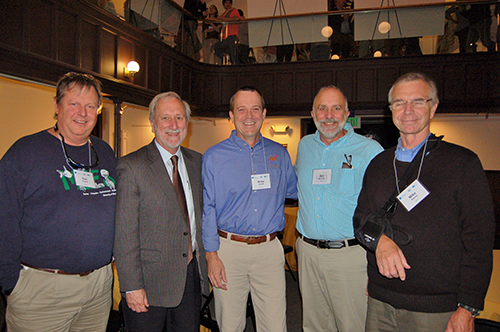
Ricky emphasized a few major points during his presentation:
- Over the last few decades of space exploration, it has become increasingly clear that the Earth is completely unique and truly is “the crowned jewel of our solar system”. If scientists can get people to look at the Earth and its oceans from different perspectives, perhaps then we all will understand how precious our planet is and how imperative it is that we take care of our home.
- Collaboration, communication, and interdisciplinarity are important. The International Space Station is a wonderful model for what people can accomplish when they work together, and is perhaps humanity’s greatest accomplishment to date.
- Do what you love. As scientists, if we are curious, adventurous, and passionate, then the sky is the limit (pun intended)!
About the author
Suzanne Webster
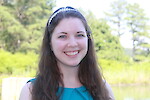
Suzi Webster is a PhD Candidate at UMCES. Suzi's dissertation research investigates stakeholder perspectives on how citizen science can contribute to scientific research that informs collaborative and innovative environmental management decisions. Her work provides evidence-based recommendations for expanded public engagement in environmental science and management in the Chesapeake Bay and beyond. Suzi is currently a Knauss Marine Policy Fellow, and she works in NOAA’s Technology Partnerships Office as their first Stakeholder Engagement and Communications Specialist.
Previously, Suzi worked as a Graduate Assistant at IAN for six years. During her time at IAN, she contributed to various communications products, led an effort to create a citizen science monitoring program, and assisted in developing and teaching a variety of graduate- and professional-level courses relating to environmental management, science communication, and interdisciplinary environmental research. Before joining IAN, Suzi worked as a research assistant at the Marine Biological Laboratory in Woods Hole, MA and received a B.S. in Biology and Anthropology from the University of Notre Dame.

